Can You Remove Skin Tags With Toothpaste?
Understand the facts and factors involved before you count on any home remedy for skin tags.
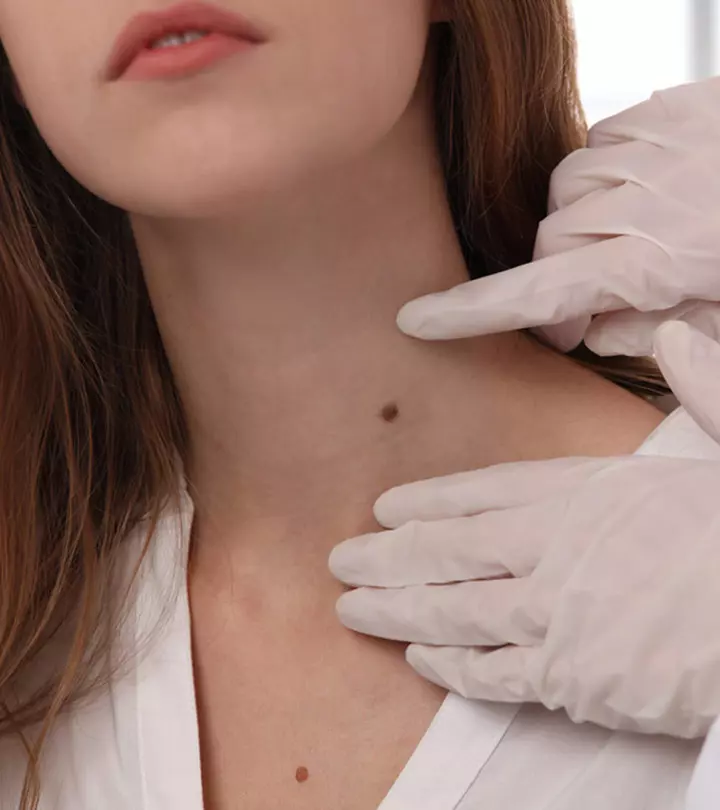
Image: Shutterstock
You will find multiple hacks on the internet to remove skin tags – one of them is toothpaste. However, is it possible to remove skin tags with toothpaste? Is it a safe process? In reality, there is no evidence that toothpaste application is safe or effective at removing skin tags. It could also do more harm than good. Scroll through this article to understand the safety and risks of using toothpaste for skin tag removal. Read on.
In This Article
What Are Skin Tags?
are tiny outgrowths in the form of a stalk (peduncle) that often appear on the skin, typically in areas where the skin forms creases, such as the neck, eyelids, armpits, and groin. They are usually flesh or skin-colored or slightly brownish and can vary in size.
Skin tags are composed of fibers, fat cells, and blood vessels surrounded by skin. They are commonly seen in adults and are more prevalent in individuals who are overweight. While the exact cause of skin tags is not fully understood, they may develop as a result of friction or rubbing of the skin. However, they are also with underlying medical conditions like type 2 diabetes, cardiovascular disease, genetic factors, and abnormal lipid profile (1).
Although they are generally harmless, some people opt for skin tag removal. Check out the following section on whether toothpaste can help.
Key Takeaways
- Many hacks on the internet claim to remove skin tags, but they are ineffective and lack evidence.
- Getting rid of them without knowing the right way can result in permanent scarring, blemishes and infections.
- Consult a dermatologist if you decide to get them removed safely. Treatments like laser therapy, cryotherapy, and clipping can deliver effective results.
Does Toothpaste Remove Skin Tags?

Even though toothpaste is used in treating numerous skin-related concerns, there is no scientific evidence to suggest that it may help remove skin tags. People sometimes believe that hydrogen peroxide, found in some toothpastes, could dry out the skin tag and make it fall off. In reality, however, this doesn’t appear to work.
If you are thinking about getting your skin tag removed, it is best to consult your dermatologist and discuss the various treatment options. There are various options available to help remove skin tags, from home remedies to in-office treatments. But bear in mind that improperly removing a skin tag may leave a permanent scar on your skin or even lead to an infection. Also, if your skin tag is in or near a joint, removing it may affect the mobility in that area.
We do not recommend you use toothpaste to remove your skin tags. Its use has not been proven in dermatology, and it may pose some risk too. The same holds true for other home remedies, including tea tree oil, garlic, and apple cider vinegar. These methods may lead to potential risks like infection, excessive bleeding, or permanent scarring.
The best option for any skin growth is to consult a dermatologist and opt for one of the following in-office skincare treatments.
In-Office Treatments For Removing Skin Tags

1. Cryotherapy
Cryotherapy is the process of using liquid nitrogen to destroy the skin tag.
This is either delivered by a jet sprayed from a bottle or by a cotton-tipped applicator. This procedure should always be done by an experienced healthcare professional.
 Trivia
Trivia2. Cutting/Clipping
Cutting or clipping your skin tag may seem like an easy job. However, do not attempt this on your own. Consult your dermatologist to have this done as cutting a skin tag off at home with scissors could lead to an infection or bleeding which cannot be stopped. Keep in mind that this could be a painful procedure where anesthesia may or may not be used. Avoid this procedure if you use blood thinners or have bleeding disorders. Also, avoid this method if you have skin tags around your eyes or genitals.
3. Laser Therapy
Laser therapy is a far easier method to remove skin tags. Here, a thin beam of light is used to remove your skin tags. It is done by healthcare professionals and often requires local anesthesia. The post-removal care and maintenance of the wound is often minimal. It can take 10-14 days after a laser treatment for a skin tag to crumble off of the body.
4. Electrosurgery
In electrosurgery, a controlled electric current is used to burn off skin tags. Since local anesthesia is used, the procedure is quick, with minimal discomfort. This method removes the skin tag effectively by sealing the tissue, reducing the risk of bleeding. The skin takes about a week to heal. Additionally, it’s a safe option for most individuals when performed by a professional.
If you do not find any of these best methods suitable for you, you may opt for the other methods mentioned below.
Other Methods Of Removing Skin Tags

1. Cauterization
In this procedure, your skin tag is essentially burned off. It is a painful process that may have to be carried out multiple times to remove the skin tag. Some doctors may use topical or injectable lidocaine as anesthesia to reduce the discomfort.
2. Ligation
A healthcare professional uses a surgical thread (suture) tied around the base of the skin tag to cut off its blood supply. This makes the skin tag fall off with time.
In addition to these methods, some believe home remedies can also help remove skin tags. However, there is no evidence that these home remedies work. Risks of home treatments include bleeding, scar formation, infection, or even delay of the diagnosis of skin cancer when mistakenly assuming that a growth is a skin tag when it’s actually something else. That said, we have listed certain home remedies that are commonly discussed. These remedies may help soothe the skin or prevent a bacterial infection. Make sure to discuss these with your doctor before starting them. Remember that home remedies will typically take more time to work than a procedural treatment in the office.
Popular Home Remedies For Skin Tags

1. Garlic
Garlic contains allicini Garlic's primary active ingredient that may decrease blood sugar, cholesterol, and blood pressure, and prevent malignancies. , a compound with antibacterial and antifungal properties (2). The compound in garlic may help reduce skin infection and inflammation, reducing the chances of scar formation.
What You Will Need
- 2 to 3 fresh garlic cloves
What You Have To Do
- Crush the garlic.
- Apply the crushed garlic on your skin
- Leave it on for an hour and wash the area using soap and water.
How Often You Should Do This
Consider starting with twice a week.
2. Ginger
The bioactive compounds in ginger and their antimicrobial properties may help inhibit bacterial growth (3).
What You Will Need
- 1 ginger slice
What You Have To Do
- Take a piece of ginger slice and rub it over your skin tag for a minute.
- Wash the area with regular water.
How Often You Should Do This
Do this once a day.
3. Baking soda
Anecdotal evidence suggests that using baking soda and castor oil together may help inhibit bacterial growth on skin.
Baking soda can also dry out the skin tag, causing it to shrink slowly over time.
What You Will Need
- ½ a spoon of baking soda
- 2 to 3 drops of castor oil
What You Have To Do
- Mix ½ a spoon of baking soda and a few drops of castor oil in a bowl.
- Apply the mixture to your skin tag.
- Leave it on for 2 to 3 hours and wash with soap and water.
How Often You Should Do This
Do this twice a week.
4. Honey
Honey has great antibacterial properties and is known to treat skin infections and ulcers
(4). Manuka honey is a variety that restricts the oxygen supply and can help with the removal process in addition to potentially helping the skin heal faster once the tag falls off. Incorporating such home remedies for skin tags can help get rid of these pesky nuisances in a safe and gentle way.
What You Will Need
- 2 to 3 drops of honey
- A cotton ball
What You Have To Do
- Add 2 to 3 drops of honey to a cotton ball.
- Apply the honey to the affected area.
- Leave it on for a couple of hours and wash with plain water.
How Often You Should Do This
Do this once every day.
 Quick Tip
Quick TipA blogger shared her experience of using apple cider vinegar to remove her skin tag. They said, “Skin tag turned black and fell off in about 3-5 days with no bleeding and no scarring (i).”
While these remedies may help promote skin health and beauty, they are not proven to remove skin tags. Also, no matter which method you opt for, it is also important to consult your doctor.
When To See A Doctor

Consult your doctor even before you try any of the natural remedies mentioned in this post. It is important to get an expert opinion. You also may consult your doctor again if none of the remedies give you the results you desire.
Visiting a doctor also helps you determine if your growth is a benign skin tag or needs other medical attention. Skin conditions, such as warts and moles, can resemble skin tags to the layperson. Some moles can be cancerous and missed without professional evaluation.
Currently, there is no scientific evidence that proves the efficacy and safety of removing skin tags using toothpaste. Improperly removing skin tags may lead to infection or permanent scarring. If you wish to remove your skin tags properly, consult your dermatologist for the available treatment options. They may suggest going for procedures such as laser therapy, cryotherapy, or ligationi A procedure in which two fragments either get attached to each other or they are tied to each other via surgical procedures. for the safe removal of skin tags. You can even opt for home remedies using natural ingredients such as garlic, ginger, or baking soda in skin tag removal. However, consult your doctor before trying any of these home remedies.
Infographic: Solutions For Skin Tag Removal
Skin tags are a cosmetic concern that we could do without. Fortunately, there are many effective home remedies and treatments, as mentioned above, that can help remove them. Check out the infographic below for a curated list of the top skin tag removal home remedies and treatments you should know about.

Illustration: StyleCraze Design Team
Frequently Asked Questions
Do skin tags always grow back?
It is highly unlikely that a skin tag will grow back after complete removal.
Do skin tags mean you have diabetes?
Skin tags may develop due to high levels of insulin in your blood (5).
What kind of oil removes skin tags?
Anecdotal evidence suggests using tea tree oil for skin tags may help dry them out and causing them to fall off eventually
Why am I getting so many skin tags on my neck?
You may develop skin tags on your neck due to constant friction, diabetes, or weight gain (5).
Illustration: Is Toothpaste Good To Remove Skin Tags
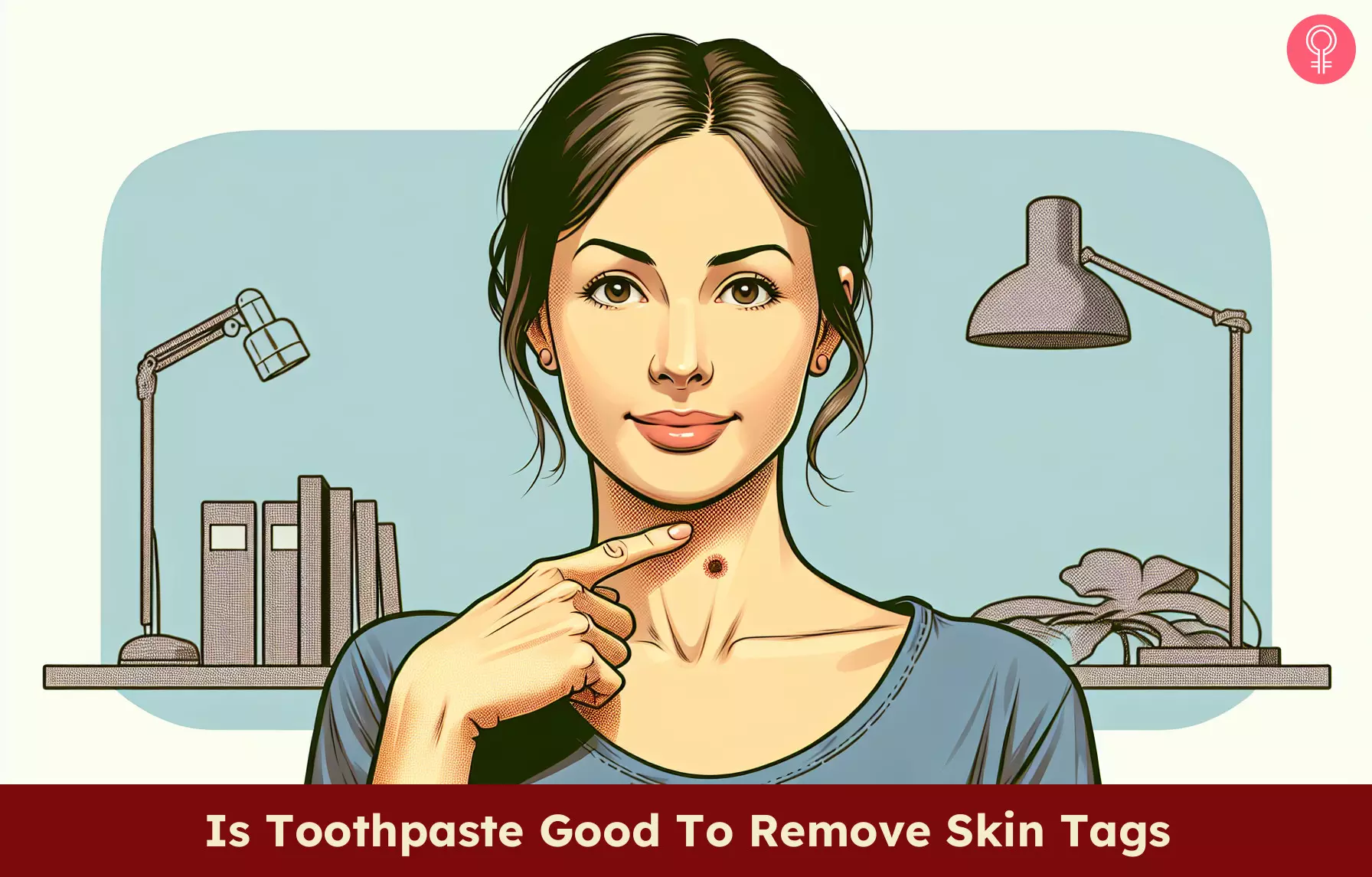
Image: Dall·E/StyleCraze Design Team
Discover a simple trick to eliminate skin tags overnight using toothpaste in this informative video below. Check it out and learn the step-by-step process to efficiently get rid of those unwanted skin extensions.
Personal Experience: Source
StyleCraze's articles are interwoven with authentic personal narratives that provide depth and resonance to our content. Below are the sources of the personal accounts referenced in this article.
i. At home skin tag removal experiment with Apple Cider Vinegarhttps://dailywanderlust.wordpress.com/2012/05/02/at-home-skin-tag-removal-experiment-with-apple-cider-vinegar/
References
Articles on StyleCraze are backed by verified information from peer-reviewed and academic research papers, reputed organizations, research institutions, and medical associations to ensure accuracy and relevance. Read our editorial policy to learn more.
- Skin Tags
https://www.ncbi.nlm.nih.gov/books/NBK547724/ - Antimicrobial properties of allicin from garlic
https://pubmed.ncbi.nlm.nih.gov/10594976/ - Bioactive Compounds and Bioactivities of Ginger (Zingiber officinale Roscoe)
https://www.ncbi.nlm.nih.gov/pmc/articles/PMC6616534/ - Honey: its medicinal property and antibacterial activity
https://www.ncbi.nlm.nih.gov/pmc/articles/PMC3609166/ - SKIN TAGS IN TYPE 2 DIABETES MELLITUS: A VALUABLE MARKER
https://www.researchgate.net/publication/340170105_SKIN_TAGS_IN_TYPE_2_DIABETES_MELLITUS_A_VALUABLE_MARKER
Read full bio of Dr. Farhaad Riyaz
Read full bio of Annie Jangam
Read full bio of Ramona Sinha
Read full bio of Medha Deb








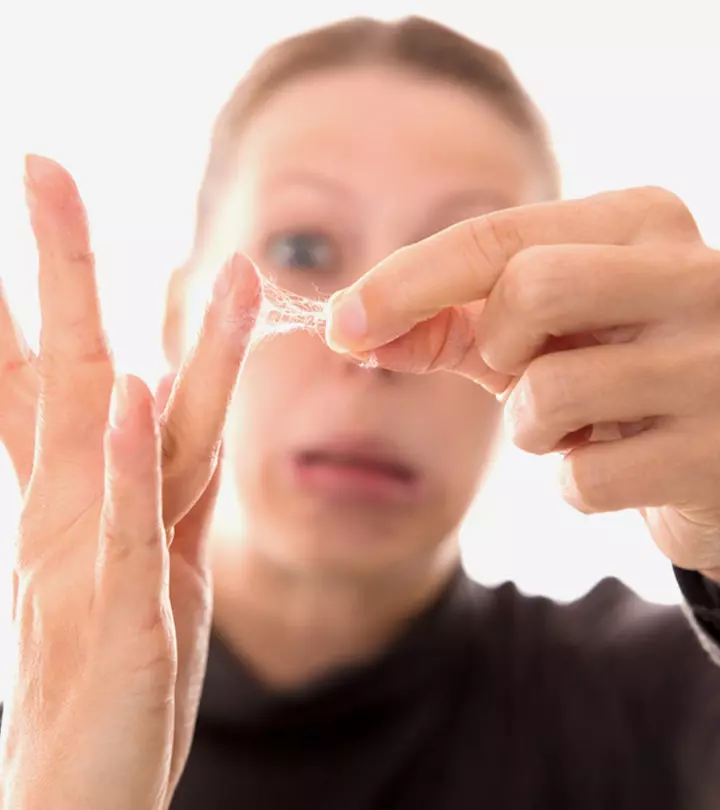
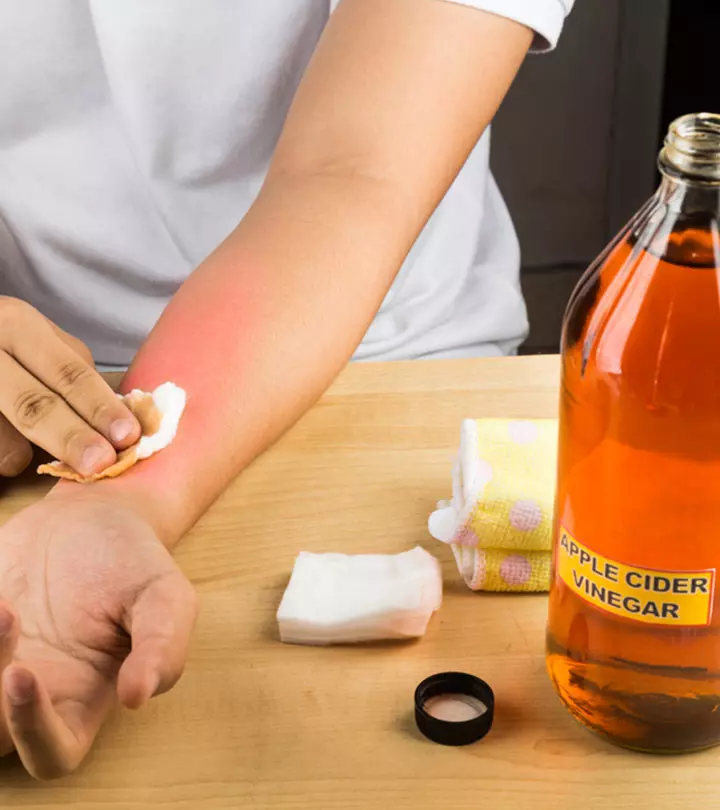

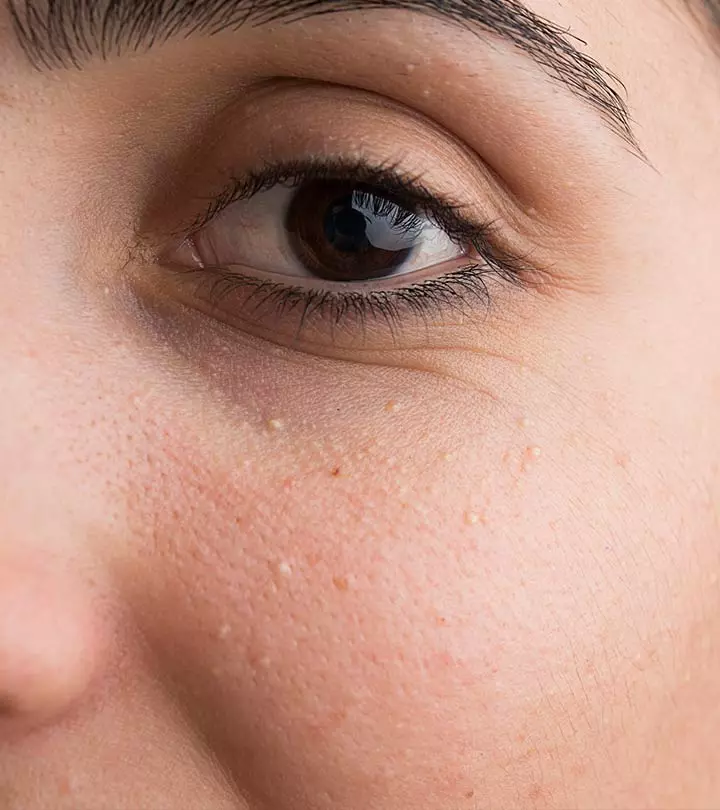
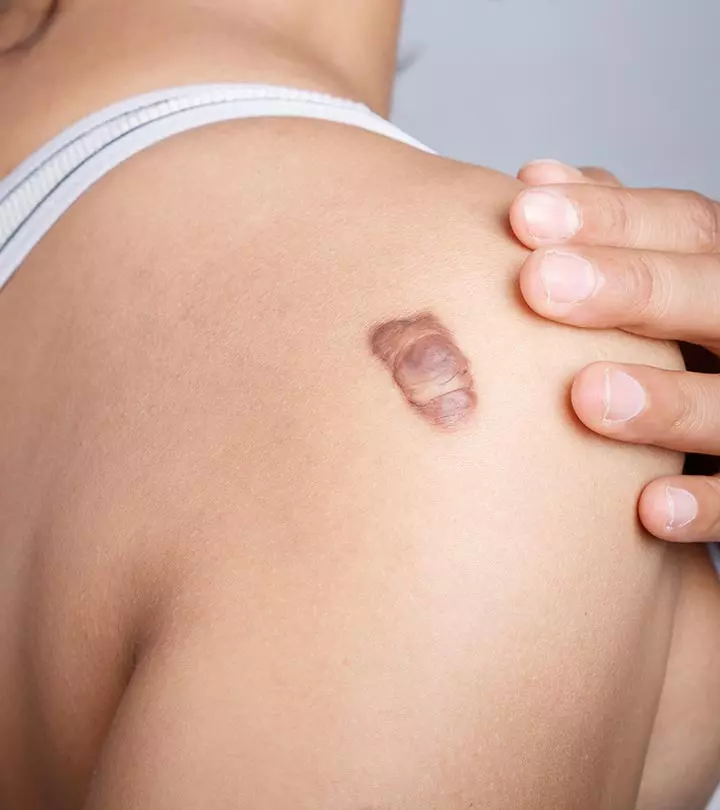














Community Experiences
Join the conversation and become a part of our empowering community! Share your stories, experiences, and insights to connect with other beauty, lifestyle, and health enthusiasts.